Steamboat Round the Bend

Cast & Crew
John Ford
Will Rogers
Anne Shirley
Irvin S. Cobb
Eugene Pallette
John Mcguire
Film Details
Technical Specs

Synopsis
In the early 1890's, on a Mississippi River steamboat, an orator calling himself the "New Moses" preaches against the evils of "demon rum." Shortly thereafter, Dr. John Pearly hawks concoctions he calls "Pocahontas Remedies," which seem to have a high alcoholic content. After Doc buys the steamboat Claremore Queen with the money he has made selling the "remedies," steamboat Captain Eli of the Pride of Paducah wagers his boat against Doc's in the upcoming race to Baton Rouge. Doc is a bit chagrined to find his boat in a delapidated state, but he makes Efe, an alcoholic who owes him for a number of bottles, his engineer and first mate and puts him to work. Doc plans on having his nephew Duke, the pilot of the Memphis Belle , run his boat, but Duke arrives with a "swamp gal" named Fleety Belle, with whom he is in love, and confesses that he killed a man who attacked her. When Doc learns that the New Moses was a witness, he convinces Duke to give himself up to the sheriff, because Duke struck the death blow when the man came at him with a knife. Doc promises to take care of Fleety Belle. After he calls her "swamp trash," she tries to stab him, and Doc gains admiration of her spunk. When her father, fiancé and brother try to take her off the boat, Doc tells them that she and Duke are married and then chases them off with a kitchen knife. Doc then gives the grateful Fleety Belle an outfit that belonged to his deceased sister, Duke's mother, to wear to court instead of the tablecloth she wears. The judge rules against Duke, however, and Doc sends to Baton Rouge for a good lawyer for Duke's appeal. When the sheriff shows Doc an abandoned wax museum, Doc gets an idea to put the museum on his steamboat and put on a traveling show to raise the five hundred dollars for the lawyer. Although he raises the money, the court turns down Duke's appeal, and when the sheriff is about to take him to Baton Rouge, where he is to be hung, Fleety Belle grabs the sheriff's rifle and Doc grabs the sheriff, urging Duke to run. Duke, however, remains rather than get them into trouble. Doc vows to find the New Moses, but he has no luck, and with only two days before the hanging is to occur, he decides to go to Baton Rouge and speak with the governor, with whom he fought at Shiloh during the Civil War. On the way there, they are stopped at the beginning of the steamboat race to Baton Rouge. Challenged again by Captain Eli, Doc enters the race, and when they see the New Moses preaching by the shore, Doc lassoes him and pulls him into the boat, where Doc convinces him to testify on Duke's behalf. The New Moses helps with busting up the deck and lifeboat for firewood, and during the evening, Doc throws a lasso to hook unto Captain Eli's boat to pull them until morning. The next day, after Eli orders the rope chopped off, the Claremont Queen runs out of wood, so Doc suggests that they burn the wax figures from the museum. Despite this, Eli's boat still leads, until the New Moses sees Efe take a swig of the Pocahontas Remedy and, deeming it "demon rum," throws it into the furnace. The resulting explosion leads Doc and the others to toss in the remaining one hundred jugs, except for one which Efe hides, and the Claremont Queen pulls ahead of the Pride of Paducah and wins. With the New Moses in tow, Doc convinces the governor to stop the hanging, and soon Duke and Fleety Belle pilot the Pride of Paducah together.

Director
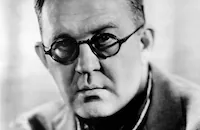
John Ford
Cast

Will Rogers

Anne Shirley

Irvin S. Cobb
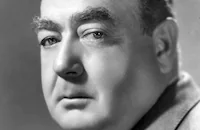
Eugene Pallette
John Mcguire
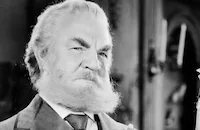
Berton Churchill
Francis Ford
Roger Imhof
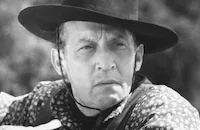
Raymond Hatton

Hobart Bosworth

Stepin Fetchit
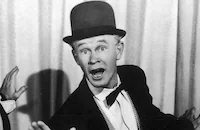
William Benedict
Lois Verner
John Lester Johnson
Pardner Jones
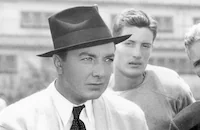
Fred Kohler Jr.
Ben Hall
Si Jenks
Louis Mason
Robert E. Homans
Dell Henderson
Otto Richards
Jack Pennick
Heinie Conklin
Captain C. E. Anderson
Grace Goodall
Ferdinand Munier
D'arcy Corrigan
James Marcus
Luke Cosgrove
Vester Pegg
John Tyke
Wingate Smith
Sam Baker
John Wallace
Ernie Shield
Frank Mayo
Jim Thorpe
Crew
Sam Benson
Irene Beshon
Sir Henry Rowley Bishop
Sidney Clare
William Darling
Al De Gaetano
Daniel Decatur Emmett
James Gordon
Albert Hogsett
R. L. Hough
Samuel Kaylin
Buddy King
Jack Lescoulie
Oscar Levant
Jockey Liebgold
Paul Lockwood
Hal Lombard
Cliff Maupin
L. C. Moore
Verne Murdock
Dudley Nichols
Ed O'fearna
Tom Ouilette
John Howard Payne
Albert Protzman
Sy Rubin
Stanley Scheuer
George Schneiderman
Vern Simmoirs
Al Smith
Paul B. Stanhope
Dwight Thompson
Joe Thompson
Lamar Trotti
Cluitt Urtubes
Henry Weinberg
Sol M. Wurtzel

Film Details
Technical Specs

Articles
Steamboat Round the Bend -
Rogers started out in vaudeville and became a star feature of the Ziegfeld Follies on Broadway. A decade or so in silent films proved less successful, lacking the verbal humor and cracker-barrel inflection for which he became known. In the sound era he found a natural home at Fox, a studio dedicated to fostering a sense of down-home Americana in line with Rogers' appeal. He became one of the studio's biggest stars in such high-profile movies as the Mark Twain adaptation A Connecticut Yankee (1931) and State Fair (1933).
Doctor Bull (1933) began a three-picture association between Rogers and director John Ford that continued with one of Rogers' best releases, Judge Priest (1934), and ended with Steamboat Round the Bend, his next-to-last film performance and the first of two released after his death in a plane crash in 1935 at the age of 55. Unsurprisingly, it was the studio's biggest hit of the year.
Rogers plays a patent medicine con man who enters a broken-down steamboat in a river race while trying to raise money and find a witness to clear his wrongly accused nephew who's about to hang for murder. Rogers paid $10,000 to get the rights to a popular serialized novel, and frequent Ford collaborators Dudley Nichols (The Informer, 1935; Stagecoach, 1939) and Lamar Trotti (Young Mr. Lincoln, 1939; Drums Along the Mohawk, 1939) turned it into a screenplay particularly suited to his talent and image.
Back on the subject of stereotypes, the film prominently features Stepin Fetchit, a talented comic who became the most successful Black actor of the 1930s and one of Hollywood's most controversial figures. Born Lincoln Perry in Key West, Florida, in 1902, he was a highly literate and intelligent man who once wrote for an important African-American newspaper, The Chicago Defender. In his early vaudeville days, he developed a comic character known as "The Laziest Man in the World," a persona he carried into nearly 60 films over the course of his career.
Today, of course, Fetchit is seen as the epitome of the "shufflin' Negro" stereotype, and even during the peak of his success in the 1930s, he was frequently the target of civil right activists who saw him as damaging to the image of Blacks in America and an impediment to their integration into mainstream society. But he has also been re-evaluated over the years, not only for his unprecedented fame and financial success but for a subtly defiant aspect of his character masked behind feigned ignorance and shiftlessness. Film historian Mel Watkins, author of the biography Stepin Fetchit: The Life and Times of Lincoln Perry, explained this view of the character in a 2006 NPR interview.
"The lazy man character that [Perry] played was based on something that had come from slavery," Watkins said. "It was called 'putting on old massa' - break the tools, break the hoe, do anything to postpone the work that was to be done." As a result, the white characters would become exasperated and do the work themselves, which Watkins said Black audiences understood perfectly and laughed at heartily.
By the end of the 30s, his career began to wane. Faced with an increasingly influential civil rights movement and constantly thwarted attempts to gain equal pay and billing as his white co-stars, Perry left the big Hollywood studios. He made only a handful of shorts in the 1940s and two low-budget features for companies that specialized in entertainment for Black audiences. He returned briefly for two features, Anthony Mann's Western Bend of the River (1952) and John Ford's The Sun Shines Bright (1953), a comedy cobbled together from three "Judge Priest" short stories by writer Irvin S. Cobb.
Cobb was also an actor, and he appears in Steamboat Round the Bend as Rogers' rival in the river race. After Rogers' death, the studio changed the ending, which showed him waving goodbye to Cobb, a gesture deemed too poignant in light of the tragedy.
Director: John Ford
Producer: Sol M. Wurtzel
Screenplay: Lamar Trotti, Dudley Nichols, based on the novel by Ben Lucien Burman
Cinematography: George Schneiderman
Editing: Al DeGaetano
Art Direction: William Darling, Albert Hogsett
Music: Samuel Kaylin (uncredited)
Cast: Will Rogers (Doctor John Pearly), Anne Shirley (Fleety Belle), Irvin S. Cobb (Captain Eli), Eugene Pallette (Sheriff Rufe Jeffers), Stepin Fetchit (Jonah)
By Rob Nixon

Steamboat Round the Bend -
Quotes
Trivia
Notes
This film was released after the death of Will Rogers on August 15, 1935 in an airplane crash near Point Barrow, Alaska, in a plane piloted by his friend and noted aviator, Wiley Post, who also died in the accident. According to news items, Rogers had signed a contract with Twentieth Century-Fox to make ten films the day before the trip. In 1933-34 and 1934-35, Rogers was the number one money-making star, according to a Motion Picture Herald poll of independent exhibitors and news items. During the funeral services for Rogers, over 12,000 motion picture screens were darkened for two minutes and production ceased in Hollywood, according to Motion Picture Herald. Although this was the last film Rogers made, it was released before In Old Kentucky, as Twentieth Century-Fox deemed this film to be the stronger, according to modern sources. Modern sources also state that the studio changed the final scene after Rogers died. Originally, sources state, the film ended with Rogers waving farewell to the character played by Irvin S. Cobb, but although Cobb urged the studio to retain the shot, the studio felt that audiences would interpret the scene as Rogers waving goodbye to the world, so they took it out to avoid sending the audience away in tears.
The novel was originally published in serial form in Pictorial Review, September 1933-February 1934. The working title of the film was Steamboat Bill. According to information in the Twentieth Century-Fox Records of the Legal Department at the UCLA Theater Arts Library, author Ben Lucian Burman complained that he was not treated fairly by the company in testimony at a hearing in April 1936 of the Sirovich Committee in Congress. The legal records also reveal that Charles Middleton was originally cast in the role which Roger Imhof played, and that four steamboats were rented from a company in San Francisco and used in filming on the Sacramento and San Joaquin Rivers between Sacramento and Stockton, CA. Hollywood Reporter news items state that some scenes were shot in Sacramento. According to a Hollywood Reporter news item, on September 30, 1935, studio head Darryl Zanuck sent a complete script of this film to Boris Shumatzky, the head of the Soviet film trust, at the request of Shumatzky, who wanted to introduce American methods into the Russian film industry. According to modern sources, the name of the steamboat was changed to "Claremont Queen" in the film in honor of Rogers' hometown of Claremont, OK.














